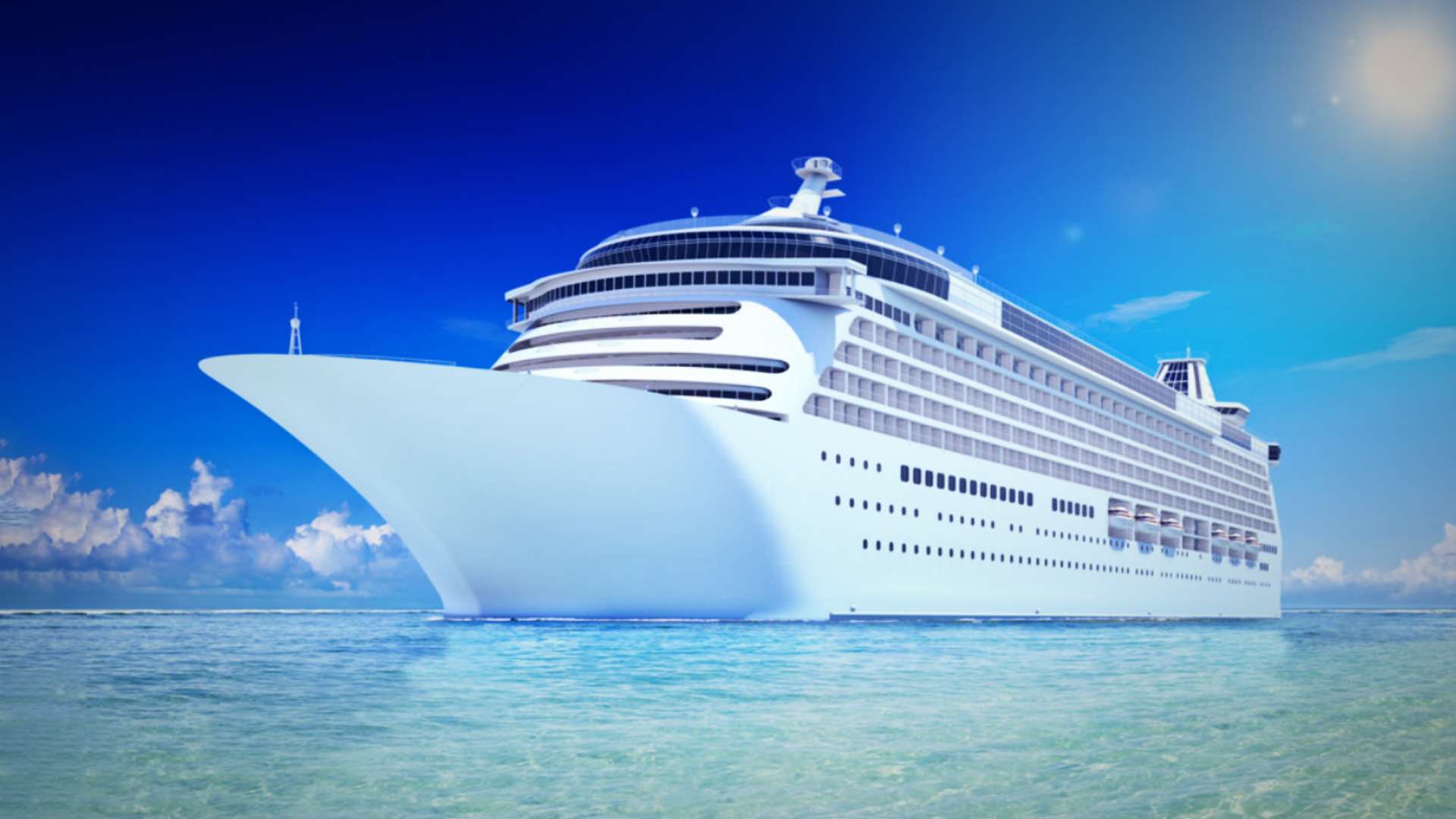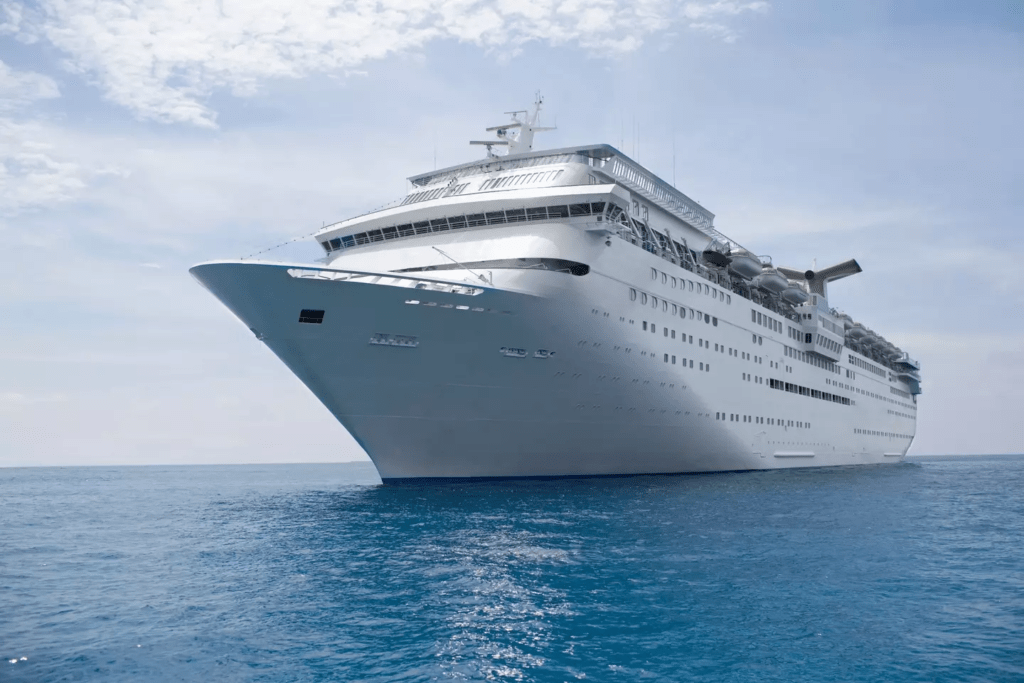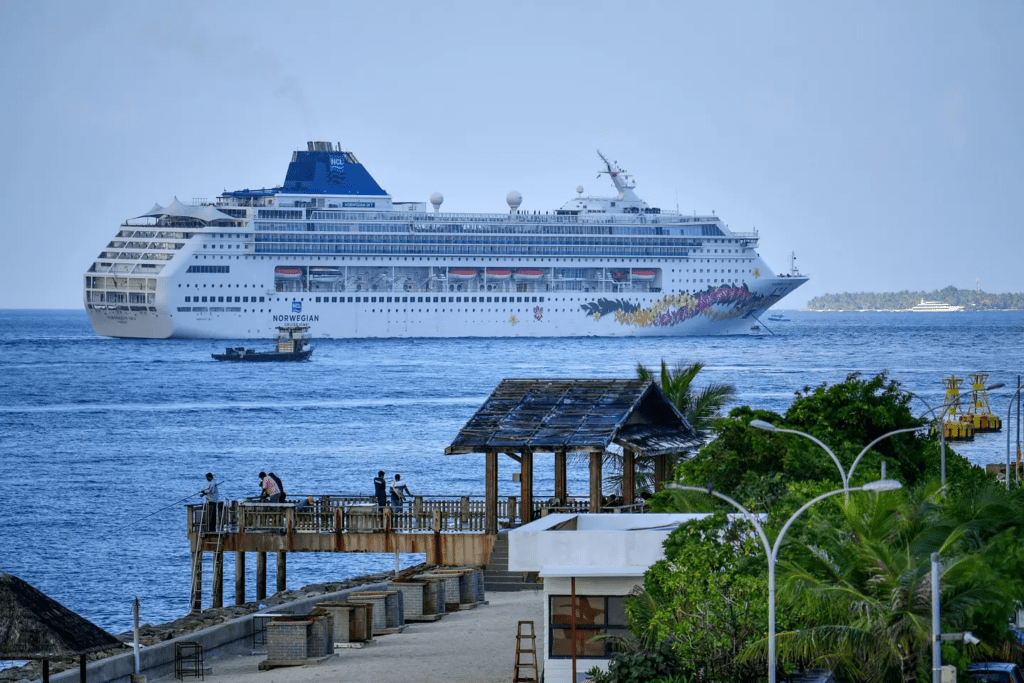Why Cruise Ships Are Always Painted White: The Smart Science and Strategy Behind It

Introduction: The Mystery Behind the White Paint
Cruise ships are engineering marvels, blending luxury and functionality. But have you noticed that nearly all cruise ships share a common trait—their color? Almost universally white, this color choice isn’t random or aesthetic alone. It reflects a blend of practical, scientific, and business-driven decisions that make white the ultimate choice for cruise ships.
While a fleet of brightly colored vessels might seem like a dazzling idea, the reality of operating massive ships in diverse climates and waters requires efficiency and foresight. The reasons behind painting cruise ships white offer a fascinating glimpse into how science and strategy influence maritime design.
Explore the science behind other ship design choices.
1. Business Savvy: The Psychology of Purity and Prestige
White isn’t just a neutral color; it’s a powerful psychological tool. It conveys purity, cleanliness, and sophistication—qualities cruise companies strive to associate with their services. For passengers, the pristine appearance of a white ship signals high standards, creating a subconscious expectation of luxury and comfort throughout their journey.

Unlike bold, flashy colors that might appeal to niche audiences or feel garish, white is timeless and universally appealing. It also enables cruise operators to prominently display logos and branding in a way that feels elegant rather than overwhelming. A white backdrop ensures their messaging stands out from miles away, reinforcing brand visibility.
White ships also photograph beautifully, making them a favorite in travel marketing. Whether it’s promotional content or a passenger’s Instagram photo, white ships project an air of class and prestige. Read more about color psychology in branding.
2. Energy Efficiency: The Science of Staying Cool
The practicality of white extends beyond aesthetics—it’s a scientific necessity for reducing heat absorption. Reflecting sunlight instead of absorbing it, white surfaces keep the ship’s exterior cooler. For cruise ships constantly exposed to direct sunlight, this effect significantly reduces interior temperatures, benefiting both passengers and the ship’s energy systems.
Lower temperatures translate to reduced reliance on air conditioning, cutting down on energy consumption. This isn’t just a cost-saving measure; it also aligns with sustainability goals. With the cruise industry facing increasing scrutiny for environmental impact, every bit of energy efficiency helps.
Furthermore, the cooler environment ensures a more comfortable experience for passengers in tropical climates. This thoughtful design choice reflects how cruise lines balance guest satisfaction with operational efficiency. Learn how energy efficiency influences cruise ship design.
3. Visibility and Safety: Standing Out on the High Seas
Visibility is paramount in the vast expanse of open waters, and white is the most effective color for ensuring cruise ships stand out. Against the deep blue of the ocean, white ships are easily recognizable from miles away, making them highly visible to other vessels and emergency responders.
At night, the reflective properties of white paint further enhance visibility under minimal light, providing an added layer of safety. This contrast becomes even more critical in adverse weather conditions, where fog, rain, or storms can obscure visibility. A white ship offers an unmistakable beacon in the ocean, reducing collision risks.

Additionally, white surfaces make it easier to spot dirt, stains, or damage. Any potential issues become more visible, allowing for timely maintenance and reducing risks. Explore maritime safety measures for passenger vessels.
4. Practical Maintenance: Easy Repairs and Minimal Hassle
Maintaining a cruise ship’s exterior is a significant undertaking. Exposed to harsh elements like saltwater, UV rays, and occasional bumps at port, ships are prone to wear and tear. The simplicity of white paint makes it easier to maintain the ship’s appearance without requiring complicated color-matching processes.
For brightly colored ships, scratches or stains would stand out prominently, requiring extensive repairs to restore their aesthetic appeal. With white, repairs are streamlined. A fresh coat of white paint can be applied quickly and seamlessly, saving both time and money for cruise operators.
This practical advantage allows cruise lines to focus resources on other operational priorities, such as enhancing guest experiences. It’s a functional choice that balances aesthetics with efficiency, proving that sometimes simplicity is the smartest option. Discover how maintenance influences ship longevity.
Social Media Reactions: Why the Internet is Talking About Cruise Ship Colors
Social media has brought fascinating topics like this into the spotlight, sparking debates and curiosity worldwide. Posts about why cruise ships are white have gone viral, showing just how intrigued people are by design decisions. Here are some highlights from online discussions:
Twitter Post:
“Did you know white isn’t just for aesthetics on cruise ships? It’s about safety, heat reflection, and maintenance efficiency. Genius design in plain sight! 🚢 #CruiseLife”
See the conversation on Twitter.
Instagram Post:
“White cruise ships aren’t boring—they’re brilliant. Reflecting heat, cutting energy costs, and symbolizing luxury, it’s smart design at its best! 🌊 #OceanAdventures”
Check out the Instagram post.
Reddit Discussion:
“I used to think cruise ships were white because it was a tradition. Turns out it’s all about efficiency, safety, and branding. Who knew science and business went so deep?!”
Join the Reddit thread.
Facebook Post:
“Why are cruise ships white? Not just tradition—it’s a smart choice for visibility, energy efficiency, and low maintenance. Learn the facts behind the design. 🛳️”
Read more on Facebook.
5. Environmental Considerations: Navigating Sustainability
Environmental consciousness is becoming a priority for the cruise industry, and white paint indirectly supports sustainability efforts. By reflecting heat, white surfaces reduce energy consumption onboard, lowering greenhouse gas emissions associated with excessive air conditioning use.
Additionally, some cruise companies are exploring environmentally friendly paint options. These paints not only reflect heat but also resist barnacle growth, reducing drag and improving fuel efficiency. It’s a small but meaningful step toward minimizing the environmental footprint of these massive vessels.
As passengers demand greener travel options, cruise lines are embracing innovative strategies to balance luxury with responsibility. White paint remains a symbol of this effort, representing a blend of tradition and progress. Learn about the cruise industry’s sustainability challenges.
6. Tradition Meets Modern Design: A Timeless Choice
White has deep roots in maritime traditions, symbolizing prestige, elegance, and reliability. Naval vessels and luxury yachts have long been painted white, a legacy that cruise ships continue to honor. This choice bridges the gap between tradition and modern innovation, creating a design that feels both classic and contemporary.
Many cruise lines now enhance their white exteriors with colorful accents, lighting displays, or intricate designs. These elements add a touch of vibrancy while preserving the benefits of a predominantly white surface. The result is a visually striking ship that appeals to modern travelers while staying true to its functional roots.
As design trends evolve, white remains a constant—a testament to its timeless appeal and practicality. Discover how tradition influences modern shipbuilding.
Conclusion: The Multifaceted Logic of White Cruise Ships
The decision to paint cruise ships white is anything but arbitrary. It’s a testament to how science, strategy, and tradition converge in maritime design. From reducing energy consumption to enhancing safety, white paint offers a host of advantages that benefit both operators and passengers alike.
Next time you spot a gleaming white vessel on the horizon, take a moment to appreciate the thoughtfulness behind its design. It’s more than just paint—it’s a reflection of smart, sustainable, and timeless engineering. Read more about the fascinating world of cruise ship design.
Featured Image Credit: Getty Stock Photo






